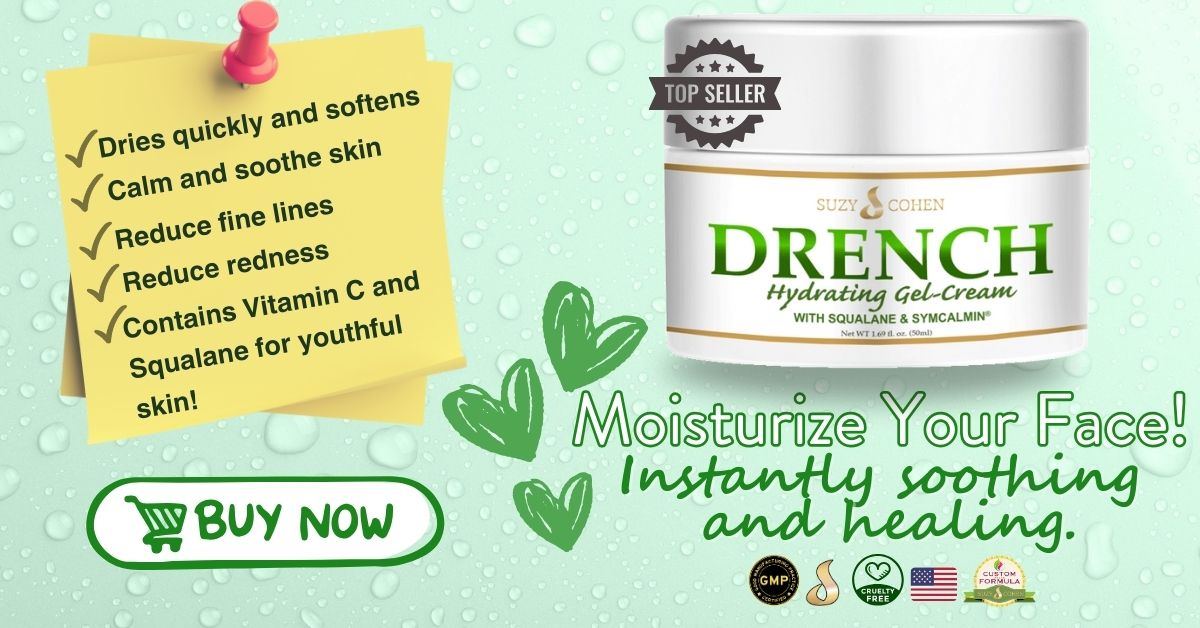Medications come from many sources including plants. When plants are used to make a drug, the end product drug (not the plant) goes through phases of testing until it gets FDA approved. For example, the opium plant has given us analgesic benefits for millennia, and no FDA approval was required. But when parts of this same exact plant are morphed in a laboratory by pharmaceutical companies to create hydrocodone, it requires testing and FDA approval. You also need to see a medical doctor to get a valid prescription to take to your pharmacy.
But what happens if you use steam to distill and separate the plant components into its water and oil parts? That’s how essential oils are made. They are oils extracted from a plant (or a tree) and they are created through the simple process of steam distillation. Essential oils are not drugs, although they have plenty of medicinal benefits.
Furthermore, you don’t need a prescription and you don’t need a pharmacy! Some holistic practitioners regularly suggest essential oils (EOs) to their patients because it offers you a simple, affordable treatment. Essential oils, when used correctly, have profound and potent actions on the body and impact your metabolic pathways similarly to drugs and dietary supplements.
If you inhale a specific oil, or put it into a diffuser and aromatize it, you will be harnessing a natural healing modality. If you apply an oil, for example, tea tree oil, you will be utilizing very strong anti-fungal and antiseptic benefits.
Just breathing in certain essential oils (EOs) can have immediate benefits. For example, a few deep inhalations of lavender or chamomile EO can cause instant relaxation in some people, that’s why this is offered at some massage therapy clinics. Aromatherapy of specific essential oils offers an incredible alternative to harsh treatments. Knowing which EO to utilize is critical to your benefits, so in this case, knowledge is power. Knowing what to use and how to use it is truly an art.
Today, my focus is on some winter essential oils which can help restore balance to the dreary, cold winter months ahead. The EOs that I’m discussing today can help with your complexion, immune function, mood (ie SAD or seasonal affective disorder) and ability to cope. In light of the coming holidays and the cold weather, this is going to be very useful information.
Here are the best EOs derived from trees and plants which thrive in winter and high altitudes:
Rosemary (Rosmarinus Officinalis)
Known for its distinctive aroma, this essential oil smells like a concentrated version of the needle-like spice that I scissor into soup and roasted chicken! It has a characteristic evergreen crossed with citrus kind of herby scent. Rosemary comes from the mint family, which also includes basil and lavender.
Rosemary has digestive benefits and dietary intake may support breast health too. Studies suggest it plays a role in reproductive cancers like breast and prostate. As for the essential oil, it can be taken internally and used in recipes for the hardy or meat-based entrées and let me tell you, one drop of it goes a long way.
When I tried one drop of it for a sore throat, I didn’t like taking it orally, so I put it in a capsule (I used a size 0 capsule) and then the next day I put it in a spoonful of honey. If you love rosemary, you can put it in a cup of hot water and make a ‘tea’ out of it.
It’s great to diffuse in an aromatizer while studying or writing books and blogs and I’ve also tried it this way because it helps me maintain better focus. It’s also thought to help with fatigue but I can’t vouch for that one personally.
Cypress (Cupressus sempervirens)
The clean, fresh scent of Cypress will ‘wake’ you up and make you feel more energetic. In my opinion, this EO could be inhaled once and then applied to your feet and calves (in a carrier lotion) right before you go to the gym or go for a run. My thinking is that you’ll be able to run faster, or you might be able to take more weight on when you do leg lifts.
For the benefit of others, do not apply too much of this EO because it has a strong scent, and it contains “camphene” (a strong antiseptic) which you do not want to expose other gym visitors to. You also don’t want to leave any Cypress residue on shared gym machines, so again be mindful of how you’re applying it, and how much, and where you are working out (ie home gym or public).
I would say to put just 1 or 2 drops to a carrier lotion/oil and apply it to your feet or rub it on your legs. Cypress EO is used in many day spas and by licensed massage therapists because it is invigorating. Cypress can be mixed with grapefruit, orange or sandalwood oil.
One interesting fact about Cypress is that it can help reduce blemishes in people with oily skin due to the content of “alpha-pinene.” You could put a drop of Cypress into your facial toner or create a cool compress using water that is laced with a few drops of Cypress. Alternatively, you could add one drop into your favorite face serum or night cream as part of your beauty routine. This recommendation is for people with oily skin, or prone to break-outs. It’s not ideal for dry skin. It has a strong astringent chemical profile and therefore it should never be put into or near your eyes.
Another interesting fun fact: it takes about 6 pounds of tree material to extract one 10ml bottle of Cypress essential oil! 😮
Juniper Berry (Juniperus communis)
The berries of the coniferous tree called Juniper give us this beautiful, calming essential oil. It has a strong woodsy but clean aroma. It is thought to support urinary tract health and issues related to the kidneys.* Like Cypress, it may have a use for reducing pimples and improving complexion. You could put a drop into your face moisturizer.
Because of the clean scent, most people diffuse Juniper Berry EO. It has a grounding effect so think about putting 3 drops in your diffuser and keeping it in your office. If your brand allows you to take it orally, try adding one drop into a large (8oz) glass of apple, grape or cranberry juice.
Not all brands of essential oils can be taken internally; some can be very irritating so make sure your brand allows oral use beforehand. Topically, you can dilute it with apricot or coconut oil (or your favorite body lotion) and simply apply it to dry skin.
Siberian Fir (Abies sibirica)
The Siberian fir tree grows very tall and in harsh, cold weather like Russia and Canada. This tree’s needles are used to create the EO which is often used as aromatherapy. The strong woody scent has instant calming and relaxing properties. The needles of the tree contain a chemical related to “borneol” called “bornyl acetate” which gives it that pine-like aroma.
The essential oil of Siberian Fir may be helpful to calm the emotions and provide a sense of grounding when you feel like things are out of control. It’s akin to taking a hike in the forest and smelling the clean, fresh aroma of the fir trees growing along the path. One more use is to massage it into your skin after strenuous muscle activity.
Cedarwood (Cedrus atlantica)
There are few things I love more than the fresh smell of cedarwood. It promotes a relaxing feeling when diffused in a room. Cedar trees thrive in cold, high altitudes growing up to 100 feet tall. The essential oil of cedar can be diffused (or inhaled) if you have a difficult day. It is also thought to keep moths away so you could put a drop on a cotton pad and place it in your closet. If applying to your skin, use a carrier oil like apricot, coconut or your favorite lotion.
Peppermint (Mentha Piperita)
Peppermint gives us that zingy, fresh aroma that most people associate with mint. It’s from the high menthol content, which is great for throat lozenges, mints/candies and also breath fresheners and toothpaste. The peppermint plant actually grows best in temperate climates, where it doesn’t get super-hot or super cold. But it’s very popular in wintertime, especially because of candy canes and other minty deserts at the holiday table.
Peppermint EO is great to diffuse all by itself in an aromatizer, especially if you want to feel more alert or you have a mild headache. Sometimes people put a drop in water or a smoothie to add a refreshing flavor. Peppermint EO is helpful for occasional stomach upset. There are many ways to use peppermint EO. You can even put a drop in the palm of your hand or on your wrists, or to your temple for a quick pick-me-up.
Blue Spruce (Picea pungens)
Blue spruce essential oil contains very high amounts of alpha-pinene and limonene and gives us that familiar evergreen tree aroma. It’s a little bit like camphor but not as strong. It’s thought to increase levels of testosterone, so even a whiff a day, or application to the skin could help a little bit (but obviously nothing like a testosterone shot). This has a comforting aroma and can be combined with balsam essential oil, or even sandalwood or bergamot for more uplifting.
Black Spruce (Picea mariana)
A powerful woody essential oil similar to Blue Spruce, this “black” spruce is distilled from the Picea Mariana needles and branches. It has a cool, soothing evergreen-like scent and can be diffused in your room to create a relaxing atmosphere.
Native Americans used this to promote better skin health and as part of their spiritual practices. It’s high in “bornyl acetate” just like Siberian Fir essential oil. This is a chemical component that promotes relaxation and calmness and it’s found in many evergreen trees.
You can massage Black Spruce into your legs after working out, or to your skin for relaxation using a lotion or oil as a carrier to create a soothing, comforting massage. It has a clean fresh aroma.
Essential oils are sold everywhere so access is easy. You can purchase EOs online or from any EO representative that you know. The oils that I shared with you today are oils that I have tried and keep at home.
I’ve tested them in advance of this article. I believe personal experience is important when relaying this type of health information, but keep in mind that scents and aroma are highly subjective. I love winter and I love the winter trees that grow in Colorado. If I had a steam distiller, I could harvest my own oils! Scent is very personal so again, the medicinal benefits are not debatable, but whether you like the scent is! 😊
CLICK LIKE to FOLLOW Suzy Cohen – Get Important Health Tips

Suzy Cohen, has been a licensed pharmacist for over 30 years and believes the best approach to chronic illness is a combination of natural medicine and conventional. She founded her own dietary supplement company specializing in custom-formulas, some of which have patents. With a special focus on functional medicine, thyroid health and drug nutrient depletion, Suzy is the author of several related books including Thyroid Healthy, Drug Muggers, Diabetes Without Drugs, and a nationally syndicated column.


